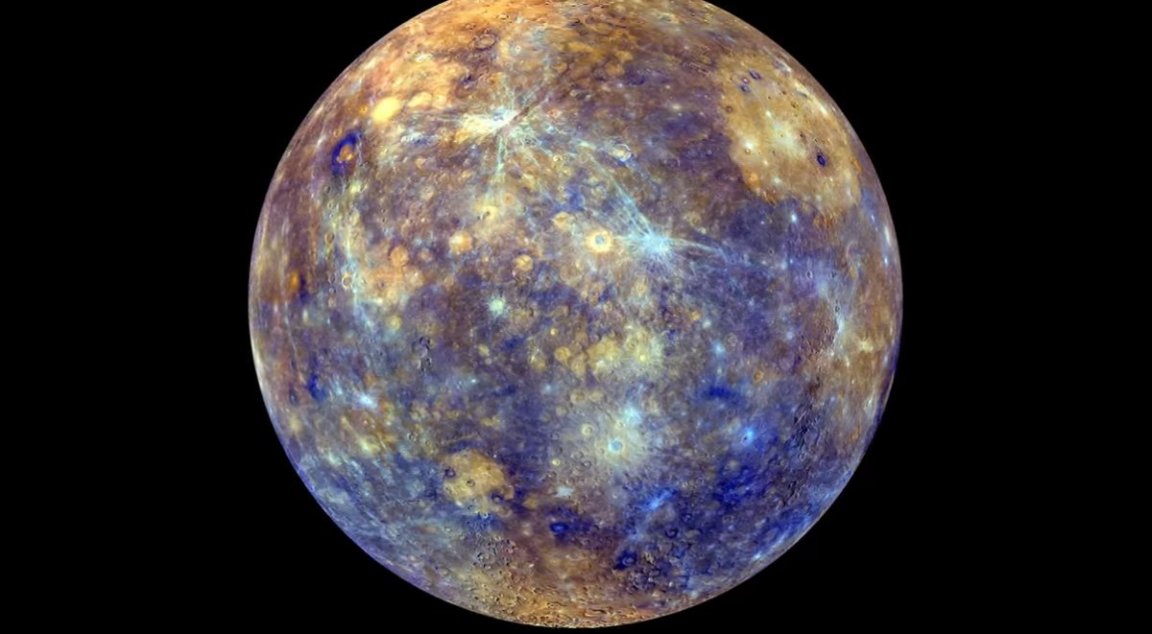
Mercury is an amazing planet. It might not get as much attention as other planets like Saturn and Jupiter, but that doesn’t mean it isn’t equally as awesome in its own way.
Mercury is the closest planet to the Sun, 48 million miles closer to the Sun than Earth to be exact. Its elliptical orbit is the also the most eccentric, and shortest, of all planets in our solar system coming in at 88 days. Mercury’s orbit is minuscule in comparison to Neptune’s – whose orbital period lasts longer than any human lifetime at a whopping 165 years.
AN EXTREME PLANET:

One of the many fascinating facts about Mercury is that despite being the closest planet to the Sun, it isn’t the hottest. That prize goes to Venus – and her thick atmosphere, providing a thick layer of insulation and trapping the Sun’s energy inside. Amazingly, there is a difference of 600 kelvin between the side that faces the Sun, and the side that looks away.
A roasting 700 kelvin (about 800 degrees Fahrenheit) can be reached on the side facing the Sun, whereas the dark side of Mercury reaches around 100 kelvin (about -280 degrees Fahrenheit) – not exactly tanning weather.
Mercury is quite different to the other planets in the solar system. It has no known moons, a negligible atmosphere, is the smallest planet, and has a crater named after John Lennon! Mercury orbits the Sun faster than any planet; however, when it comes to the time it takes the planet to spin on its own axis, Mercury actually holds the record for being the slowest at around 59 Earth days.
This is one of the coolest facts about The Sun’s closest friend. The Sun’s gravitational force slows its speed as it spins on its axis – this means a year on Mercury is shorter than a Mercurial day.
We’ve known about Mercury for millenia. The countless asteroids and meteors that have collided with Mercury give it the stunning craters we see above, and make it the most cratered planet in the solar system.
It is home to the largest impact crater, Caloris, which is an amazing 900 miles in diameter. If an asteroid the same size crashed into the Earth, the impact would be catastrophic. Even though Earth is 60% more massive than Mercury, it would still be enough to wipe out human civilization.
THE FATE OF MERCURY:
Mercury’s close proximity to the Sun will determine its fate and the Sun cannot last forever. In a few billion years, the Sun will cease nuclear fusion and become a red giant, which is one of the last stages of its life. The Sun will go through the same cycle as all stars of its size do. It will expand and consume the inner planets. Scientists are still unsure as to whether Earth will share the same fate as Mercury and Venus, or if it’ll be lucky enough to survive.
There have been two spacecrafts sent to observe Mercury. The first, Mariner 10, launched back in the 1970s, allowed us to investigate the planet’s surface and environment. The second, MESSENGER, made its first Mercurian flyby in 2008 allowing us look into how craters formed and how they dominate the landscape. In addition to this, MESSENGER may provide more insight into the planet’s formation.